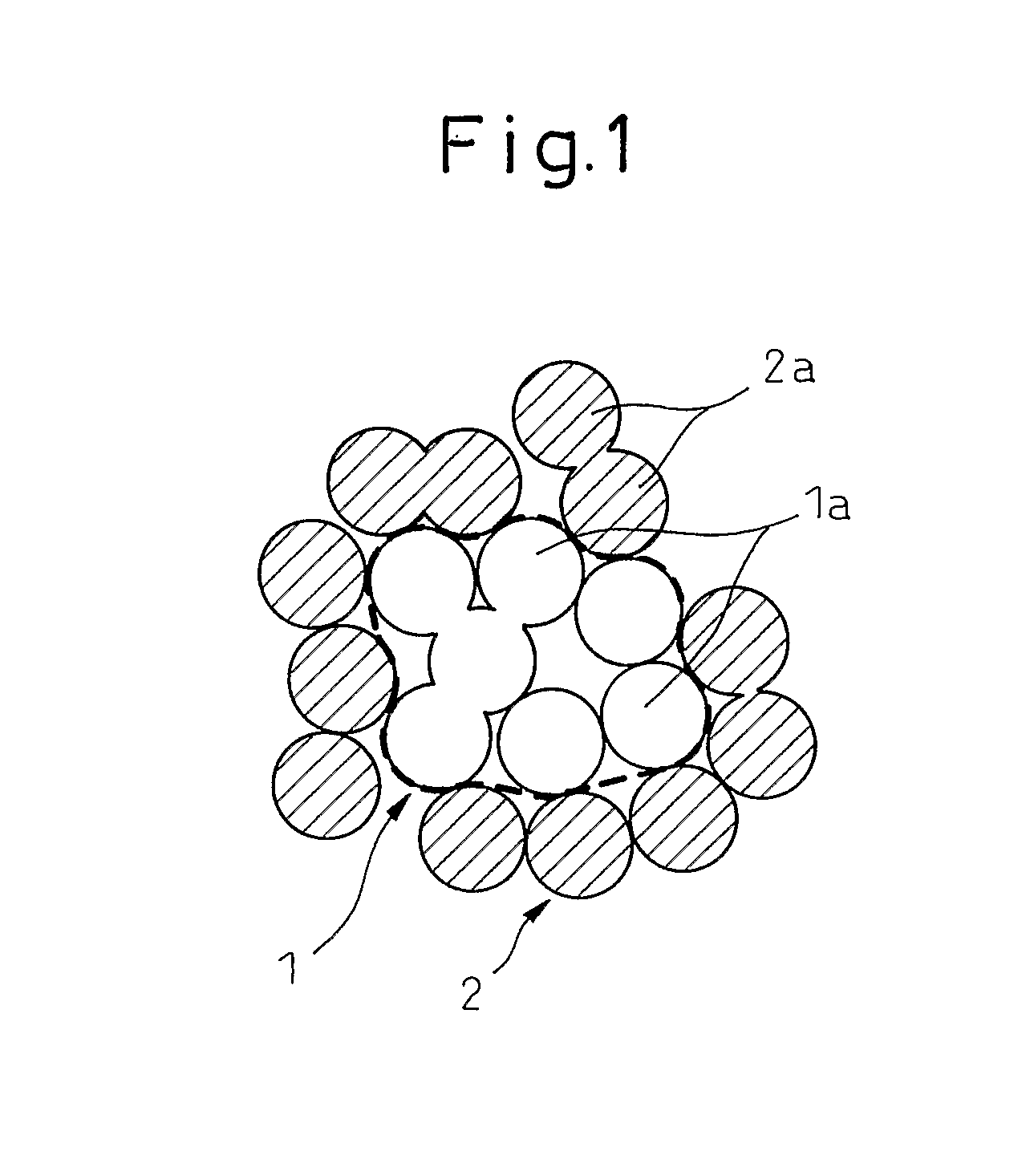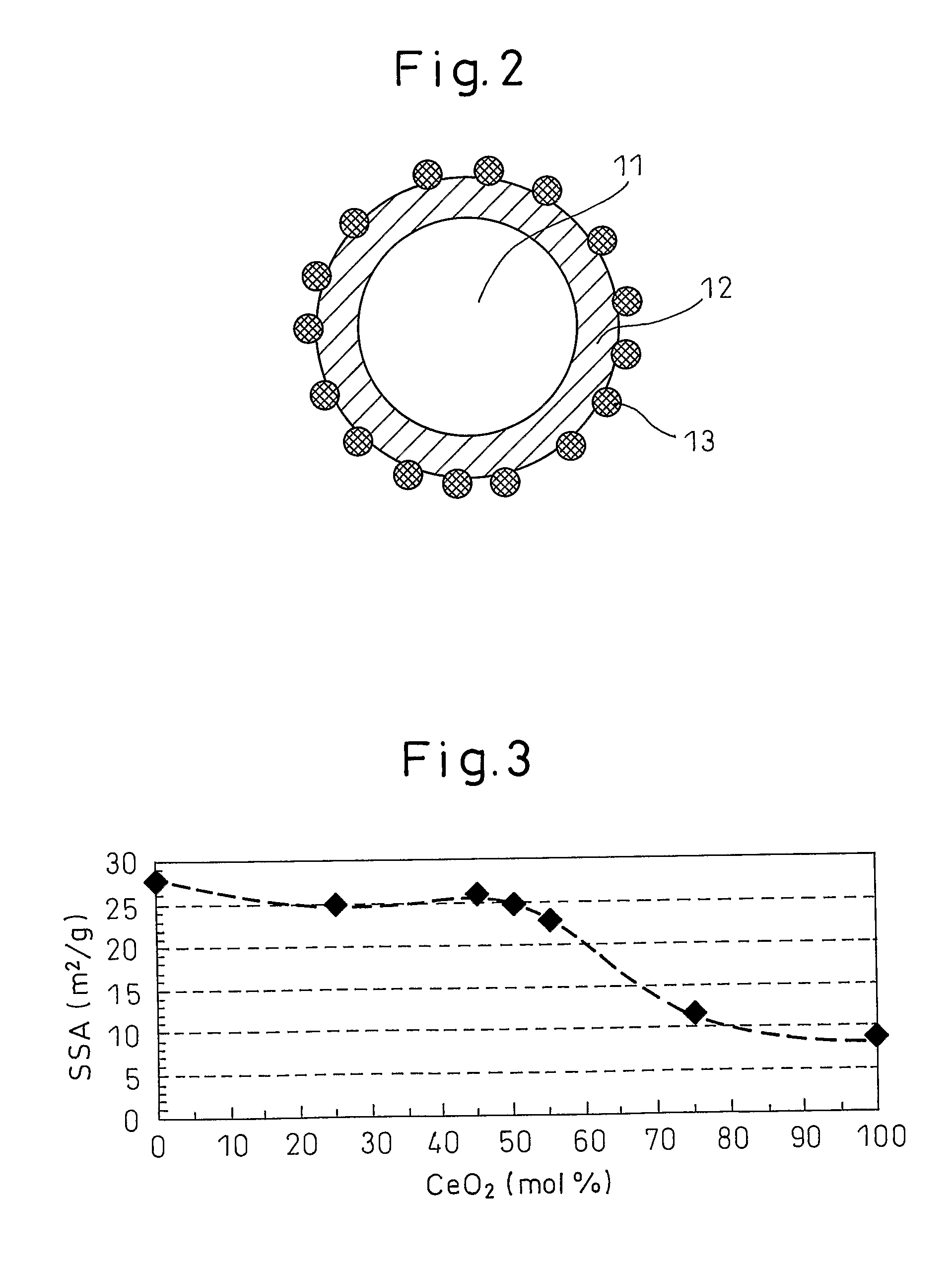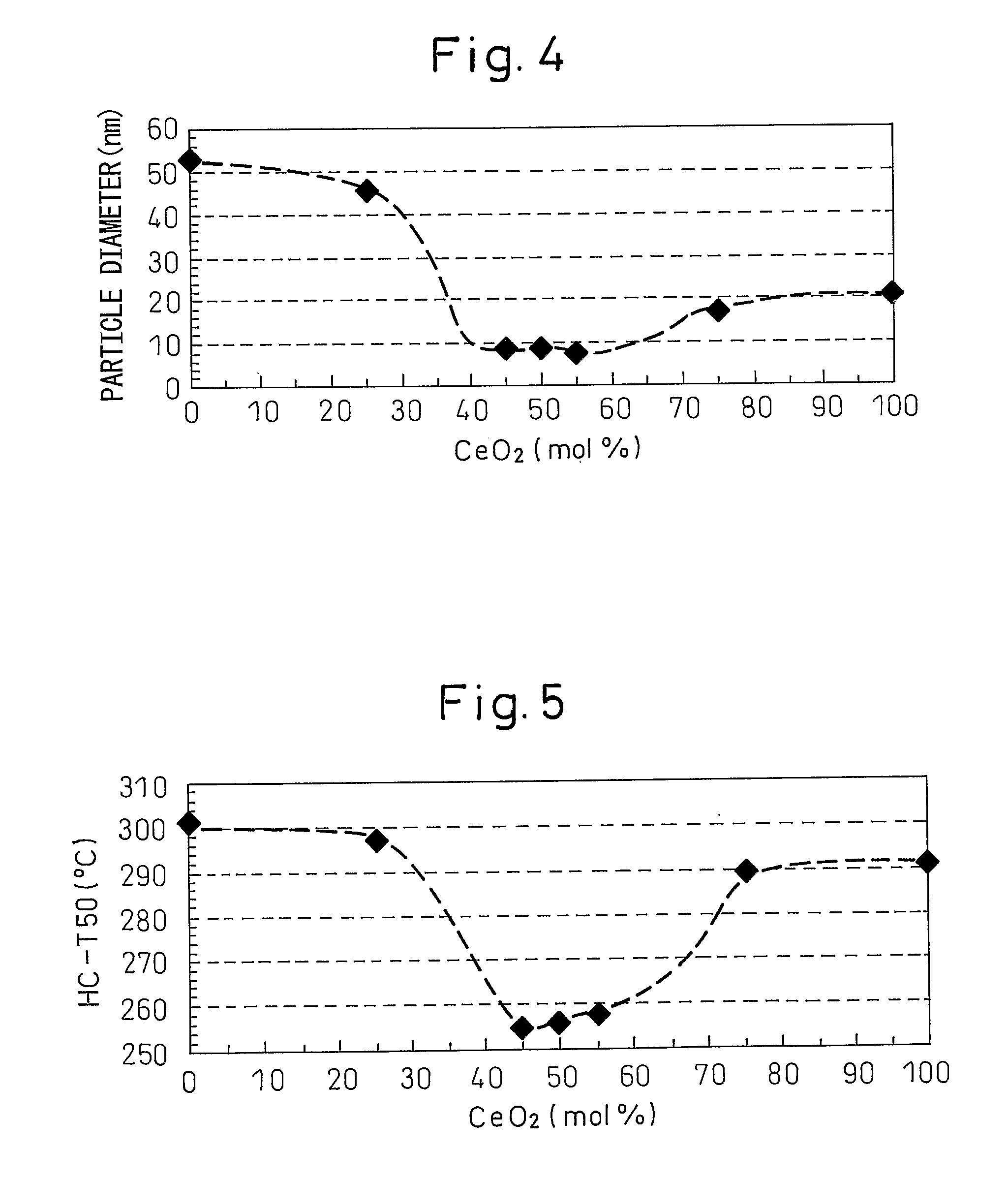Process for producing metal oxide particle and exhaust gas purifying catalyst
- Summary
- Abstract
- Description
- Claims
- Application Information
AI Technical Summary
Benefits of technology
Problems solved by technology
Method used
Image
Examples
example 1
[0075] In this Example, a metal oxide particle comprising a core part relatively rich in zirconia and a surface layer relatively rich in ceria is obtained from an alkali-stabilized zirconia aqueous sol and an acid-stabilized ceria aqueous sol.
[0076] An alkali-stabilized zirconia aqueous sol (isoelectric point: pH 3.5) and an acid-stabilized ceria aqueous sol (isoelectric point: pH 8.5) were mixed to give a molar ratio of 1:1 between zirconia (ZrO2) and ceria (CeO2). To this mixed sol, an aqueous nitric acid (HNO3) solution was added dropwise with stirring to adjust the pH to 3.0, thereby aggregating zirconia. Thereafter, an aqueous ammonia (NH3) solution was added dropwise to this mixed sol with stirring to adjust the pH to 10, thereby aggregating ceria.
[0077] The resulting mixed sol was dried at 120° C. for 24 hours, and the dried product was fired at 700° C. for 5 hours to obtain a metal oxide particle.
example 2
[0078] In this Example, a metal oxide particle comprising a core part relatively rich in titania and a surface layer relatively rich in ceria is obtained from an alkali-stabilized titania aqueous sol and an acid-stabilized ceria aqueous sol.
[0079] An alkali-stabilized titania aqueous sol (pH at isoelectric point: 3.9) and an acid-stabilized ceria aqueous sol (isoelectric point: pH 8.5) were mixed to give a molar ratio of 1:1 between titania (TiO2) and ceria (CeO2). To this mixed sol, an aqueous nitric acid solution was added dropwise with stirring to adjust the pH to 3.0, thereby aggregating titania. Thereafter, an aqueous ammonia solution was added dropwise to this mixed sol with stirring to adjust the pH to 10, thereby aggregating ceria. Subsequently, drying and firing were performed in the same manner as in Example 1 to obtain a metal oxide particle.
example 3
[0080] In this Example, a metal oxide particle comprising a core part relatively rich in alumina and a surface layer relatively rich in ceria is obtained from an alkali-stabilized alumina aqueous sol and an acid-stabilized ceria aqueous sol.
[0081] An alkali-stabilized alumina aqueous sol (isoelectric point: pH 4.8) and an acid-stabilized ceria aqueous sol (isoelectric point: pH 8.5) were mixed to give a molar ratio of 1:2 between alumina (Al2O3) and ceria (CeO2). To this sol mixture, an aqueous nitric acid solution was added dropwise with stirring to adjust the pH to 3.0, thereby aggregating alumina. Thereafter, an aqueous ammonia solution was added dropwise to this mixed sol with stirring to adjust the pH to 10, thereby aggregating ceria. Subsequently, drying and firing were performed in the same manner as in Example 1 to obtain a metal oxide particle.
PUM
| Property | Measurement | Unit |
|---|---|---|
| Temperature | aaaaa | aaaaa |
| Temperature | aaaaa | aaaaa |
| Temperature | aaaaa | aaaaa |
Abstract
Description
Claims
Application Information
 Login to View More
Login to View More - R&D
- Intellectual Property
- Life Sciences
- Materials
- Tech Scout
- Unparalleled Data Quality
- Higher Quality Content
- 60% Fewer Hallucinations
Browse by: Latest US Patents, China's latest patents, Technical Efficacy Thesaurus, Application Domain, Technology Topic, Popular Technical Reports.
© 2025 PatSnap. All rights reserved.Legal|Privacy policy|Modern Slavery Act Transparency Statement|Sitemap|About US| Contact US: help@patsnap.com



